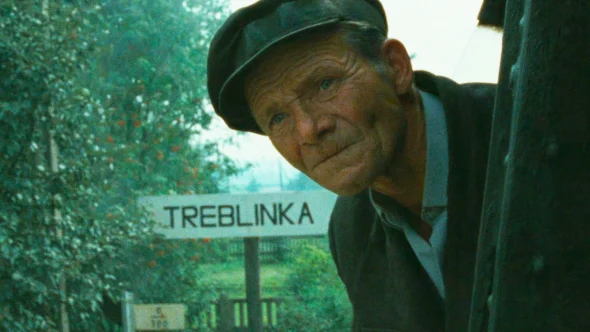
For her directorial debut, the Dutch historian, journalist, and filmmaker Bianca Stigter found inspiration in three minutes of 16mm home video footage shot in 1938. The short clip is the only remaining footage of the Jewish inhabitants of Nasielsk, Poland before the Holocaust.
"You see this vibrant community, these children trying to stay in the frame as if you can really look them in the eye. And as I was really getting into it — boom. The three minutes were over," Stigter says. "I thought, wouldn't it be great if you could somehow make the footage last longer so we could spend more time with the people in the film? To keep their past in our present a bit longer?"
Stigter's film is Three Minutes: A Lengthening, which uses said footage — and only that footage, with no other images shown over the 72-minute running time — alongside Glenn Kurtz' 2014 non-fiction book, Three Minutes in Poland: Discovering a Lost World in a 1938 Family Film, to discover the human stories within the celluloid. "I think every creative idea you have demands its own form," says the filmmaker.
Stigter previously served as an associate producer on husband Steve McQueen's Best Picture-winning biographical drama, 12 Years a Slave (2013), and his crime thriller, Widows (2018). In turn, he co-produced Three Minutes. Their latest collaboration is Occupied City, a four-hour documentary about the Nazi occupation of Amsterdam, which McQueen directed and Stigter produced based on her historical encyclopedia, Atlas of an Occupied City: Amsterdam 1940-1945.
Below, Stigter shares with A.frame five films that taught her the infinite potential of cinema.
This article was originally published on Aug. 18, 2022 and has been updated.

Where to Watch: The National Film Preservation Foundation
Directed by: Joseph Cornell
That is an old short film by an artist named Joseph Cornell, who was more known for the [shadow] boxes he made. And it made me aware for the first time that you could use a film as a source to do something else with. So, he edited a film with the actress Rose Hobart — it was called East of Borneo — and he cut out all the images that she didn't appear in. The feature film became a film about her face. That was very appealing to me, that a film can contain another film, or that you can use a film as material to create another film. Sometimes you hear these ideas that really open up a whole new world of possibilities. It's a film that is maybe not riveting to watch, but as a concept, it opened up so many possibilities in my head.

Written and Directed by: Claude Lanzmann
It is one of the greatest, cinematic, monumental films about the Holocaust that we have. I remember watching it on VHS on my own in Amsterdam over two nights. It leaves you completely devastated, flabbergasted. It's one of the heaviest film experiences you could possibly have, and it was created with so little means; that film is almost only talking heads. It made such an incredible impression on me.
Written and Directed by: Forough Farrokhzad
That is a film by the Iranian poet, Forough Farrokhzad, who died in a car accident not so long after making this movie. So, it was her first and her last movie. And it is a movie about a leper colony in Iran. They live quite hidden away. Lepers are not people that the state wants you to see, and she gave them a very beautiful poem and with such empathy, made this film in gorgeous black and white. The message for me was never judge. That was a very impressive movie.

Written and Directed by: Abbas Kiarostami
Kiarostami is, for me, one of the masters in how you distribute information. In this film, he teases you tremendously, because it's about a boy that has to do his homework but he forgets his books. He has to go up a mountain to get that book. And that doesn't happen once or twice, but five different times! And, every time, he doesn't cut. He lets you make the whole journey up the mountain again, and down the mountain again.
It becomes about endurance, and that repetition gives it its power. It's a really wonderful film. And it's so much about what do you need to tell, in what order, and how minimalistic can you be? It's just about this boy getting his homework, but he makes it completely riveting. A great, great master, Kiarostami.

Directed by: Heddy Honigmann | Written by: Heddy Honigmann and Nosh van der Lely
Heddy Honigmann is a wonderful Dutch filmmaker who recently passed away. She made a lot of wonderful documentaries, and this one is about people making music in the subway in Paris. When I think about it, I already get goose pimples. The best part of the movie is that they start to perform a pop song in one of those Underground carriages, and, while every other filmmaker would have cut away, she lets it play until they're finished. It's absolutely marvelous, because you get to really be with these people and be in their world, in their story. It's not something we just look at — cut, cut, cut — and have a kind of inkling or the shorthand of what it was like. No. She takes her time and lets these people shine on the screen. That was one of the best things I've ever seen.







